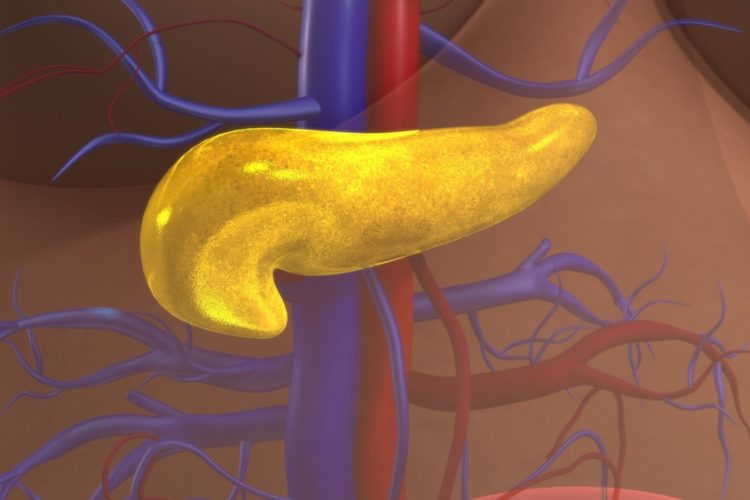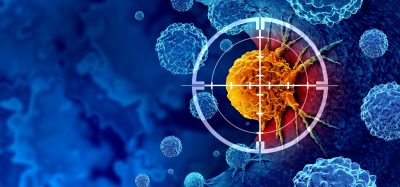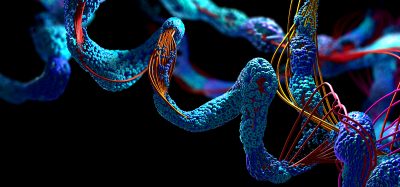Combining autotaxin and TGF-β inhibitors in cancer
Posted: 22 November 2023 | Ellen Capon (Drug Target Review) | No comments yet
Dr Catherine Pickering, CEO of iOnctura, the clinical stage biopharmaceutical company delivering pioneering cancer treatments to patients with unmet medical needs, is at the forefront of cancer drug discovery. Dr Pickering and her team identify targets that have crucial roles in multiple tumour survival pathways, collaborate with world-renowned scientists and deliver the best molecules to cancer patients with unrivalled efficacy and safety.

Can you elaborate on the central role that autotaxin plays in resistance to transforming growth factor-beta (TGF-β) pathway inhibition? How does the activation of alternative resistance pathways by the tumour hinder previous attempts to interrupt TGF-β pathway signalling in cancer?
Whilst TGF-β is an attractive target for cancer therapy because of its critical role in promoting tumor aggressiveness, immune escape and resistance to therapy, activation of alternative resistance pathways has hindered drug development attempts in the past. Our research has started to characterise these resistance mechanisms with a view to overcoming them with drug combinations. The recently published research has demonstrated that autotaxin has a central role in resistance to TGF-β therapy.
We have been developing our current autotaxin inhibitor, IOA-289, in the clinic for a couple of years and have discovered new insights about the pathway and how it controls different cellular signalling cues.
Cancer associated fibroblasts, CAFs, are a major component of the tumour microenvironment in pancreatic cancer. They promote tumour growth via an effect to construct and remodel the extracellular matrix, and via their release of immunosuppressive factors. The cues between the fibrotic tumour and CAFs are important in cancer progression. The tumour cells themselves secrete TGF-β and interleukin-1 (IL-1). These counteract each other and they balance the skewing of these CAFs towards either an extracellular matrix depositing type or a cytokine releasing inflammatory type (iCAF).
Our data showed that when the TGF-β pathway is inhibited or blocked, you skew the CAFs to become less fibrotic and more inflammatory. The CAFs release more immunosuppressive cues and as part of this phenotype shift, they release a lot more autotaxin. This autotaxin is responsible for converting LPC, a bioactive lipid overly expressed in pancreatic cancer, to lysophosphatidic acid (LPA). Importantly, the release of LPA by excess autotaxin through the LPA receptors induces nuclear factor kappa-light-chain-enhancer (NF-κB) mediated resistance.
Hence by inhibiting the TGF-β pathway in pancreatic cancer, you upregulate another resistance pathway, but one you can potentially inhibit by targeting autotaxin.
Could you explain the role of lysophosphatidic acid and NF-κB signalling in tumour cells and how the autotaxin enzyme influences the signalling pathway? How is NF-κB signalling linked to the expression of CXCL1 and the recruitment of myeloid suppressive cells?
Lysophosphatidylcholine (LPC) is found in all normal cells, but more so in tumour cells. It is converted by autotaxin into LPA. LPA itself activates six different decoupled proteins. These proteins in turn regulate gene expression through the activation of several transcription factors, including NF-κB. The NF-κB itself is then responsible for cell proliferation, migration, and cytokine release. Therefore, the autotaxin is the enzyme that produces the LPA, and the expression is controlled by, is under the control of NF-κB, so there’s a loop here.
High expression of another protein, CXCL1, in the tumour microenvironment in response to the activation of the NF-κB signalling promotes myeloid-derived suppressor cell (MDSC) recruitment. MDSCs are highly immunosuppressive; they support the tumour microenvironment and limit CD8 T-cell infiltration.
In the mice treated with IOA-289, galunisertib and gemcitabine, there was suppressed NF-κB signaling, reduced MDSC and increased CD8 T-cell infiltration, which resulted in prolonged overall survival and cured of 40 percent of the mice.
How does iOnctura plan to design novel combination treatments that effectively target both autotaxin and the TGF pathway while ensuring safety for patients? Are there any unique strategies or approaches being considered?
iOnctura is the first company to take an autotaxin inhibitor into cancer patients. Although we haven’t released the information about the dose escalation study in pancreatic cancer, we can certainly say the combination alongside the standard of care is safe. We will present some of the data at the end of the study at an international conference next year.
Initially we would like to investigate combination strategies of our autotaxin inhibitor, IOA-289, with TGF-β molecules that have already been in the clinic. We will utilise autotaxin biomarkers, and we’ve got a few that are quite relevant, to select patients that will respond best to the combination. We are also developing our own TGF-β pathway inhibitor, IOA-359, which was licensed into iOnctura earlier this year. It’s a preclinical programme but we are planning to use it in intra-portfolio combinations in the clinic. Until we are ready to progress our own compound into the clinic, combinations with existing TGF-β pathway inhibitors will enable us to investigate the mechanism of action of combinations we are interested in and will help accelerate our own combination through development and onto the market.
Pancreatic cancer is a very difficult cancer to treat. It is exciting for us now to be able to think that we could bring some benefits to patients where there is such a high unmet medical need.
Could you provide insights into the development timeline for these novel combination treatments? What preclinical stages have been completed and what milestones are expected to be achieved in the near future?
We will look at ways to combine with clinically available TGF-β inhibitor programmes externally whilst we’re moving our own TGF-β inhibitor programme into the clinic, which we think will take about a year.
With the rapidly evolving field of immuno-oncology, what are the biggest challenges and opportunities you foresee for iOnctura in the coming years, and how do you plan to address them?
With the growing field of immunotherapies and potential combination treatments, the development of well-tolerated and highly selected drugs that tackle major resistance pathways is key. This moves into thinking about developing a deep understanding of the underlying biology to find the right patient population, and to use biomarkers to select and track patients.
For us, it is important to look at blood-based biomarkers that you can measure live to see what the immune system is doing and predict resistance pathways. Our lead programme is an allosteric PI3K-Delta inhibitor, which we are developing as a small molecule immunotherapy. We’ve been using biomarkers and looking at blood-based biomarker changes to understand for the first time what a highly selective PI3K-delta inhibitor does.
About the author

Dr Catherine Pickering
CEO of iOnctura
Catherine holds a PhD in Medicinal Chemistry and an MBA. During her career she has held various licensing and business development positions in pharma and biotech.
Before founding and building iOnctura, she led the global oncology and immuno-oncology licensing and business development function at Merck. During her time at Merck she was also an integral member of the oncology franchise leadership team, a cross functional team responsible for creating the strategy and managing the oncology business.
Related topics
Biomarkers, Cancer research, Drug Discovery, Drug Targets, Immuno-oncology
Related conditions
Pancreatic cancer
Related organisations
iOnctura
Related people
Dr Catherine Pickering (iOnctura)







